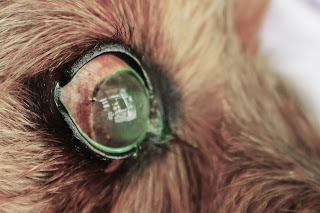Medication for the African Grey Parrot provided by Vet 1.
----------------------------------------
Hypocalcaemic Seizure has been reported in one African Grey Parrot. Blood test must be done to confirm this.
https://www.ncbi.nlm.nih.gov/pmc/articles/PMC1680947/pdf/canvetj00576-0054.pdf
Until the clinical pathology results became available, emergency treatment consisted of 25 mg calcium gluconate (calcium gluconate injection B.P., Glaxo Laboratories, Toronto, Ontario) given subcutaneously in 5 mL physiological saline (sodium chloride injection U.S.P., Abbott Laboratories, Montreal, Quebec), distributed in three sites over the pectoral musculature, and Injacom 100 + B complex (Hoffman LaRoche, Nutley, New Jersey) 0.06 mL diluted in 1 mL physiological saline subcutaneously (equals 6000 IU vitamin A and 600 IU vitamin D3).
The bird was placed in a hospital cage for observation and was fed a seed mix. Spectinomycin oral liquid (Syntex Agribusiness, Mississauga, Ontario) (15 drops in 120 mL water), calcium (Calcium Sandoz syrup 5 mL = 110 mg, Sandoz Canada, Dorval, Quebec) (1 mL in 30 mL water), and WinStress powder (WinStress, Winthrop Animal Health Products, Aurora, Ontario) (1/8 tsp in 600 mL water) were added to the bird's drinking water.
Finally, in the African grey parrot (Psittacus erithacus erithacus) and the Timneh grey parrot (Psittacus erithacus timneh) (5,7,8), a hypocalcemic syndrome has been documented. It is usually seen in young birds (two- to five-years-old) but has been reported in a ten-year-old bird. The birds have a history of fainting or seizures, often initiated by excitement. Blood calcium levels are consistently below normal (i.e. 6 mg/dL with the normal being 8 to 13 mg/dL) (9), and have been recorded as low as 2 to 4 mg/dL. On histopathology parathyroid glands are enlarged and there are severe degenerative changes. Vacuolation of adrenocortical cells is also present. Cortical bone sections, however, demonstrate no calcium loss or thinning as would be expected in a hypocalcemic state.
The clinical pathology results raise several major doubts. First, that the most probable cause of the seizures was hypocalcemia. Other potential causes of seizures (6) in birds include hypoglycemia, toxicosis (lead, mercury), infections, and epilepsy. This bird was not hypoglycemic. The prompt response to calcium therapy, together with no recurrence of seizures over a sixteen month period would tend to rule-out epilepsy. The possibility of a concurrent bacteremia must be considered due to the Enterobacteriaceae cloacal culture. Enterobacteriaceae frequently cause disease in pet birds (8), and birds seem prone to develop bacteremia. Thus, the initiation of the seizures by infection plus stress, as manifested by the increase in heterophils and glucose (Table 1), cannot be ruled out. The female bird, living in the same home and fed the same diet as the subject bird for four years, did not manifest hypocalcemia. Perhaps this would introduce some skepticism as to the hypothesis (5,7) of a virus damaging the parathyroid gland of the male bird.
Prophylactic measures to prevent the hypocalcemic seizure syndrome in African grey parrots should include vitamin D3 supplementation and periodic determinations of blood calcium levels. A calcium replete diet should be provided. Client to provide a detailed diet sheet to the vet.



















